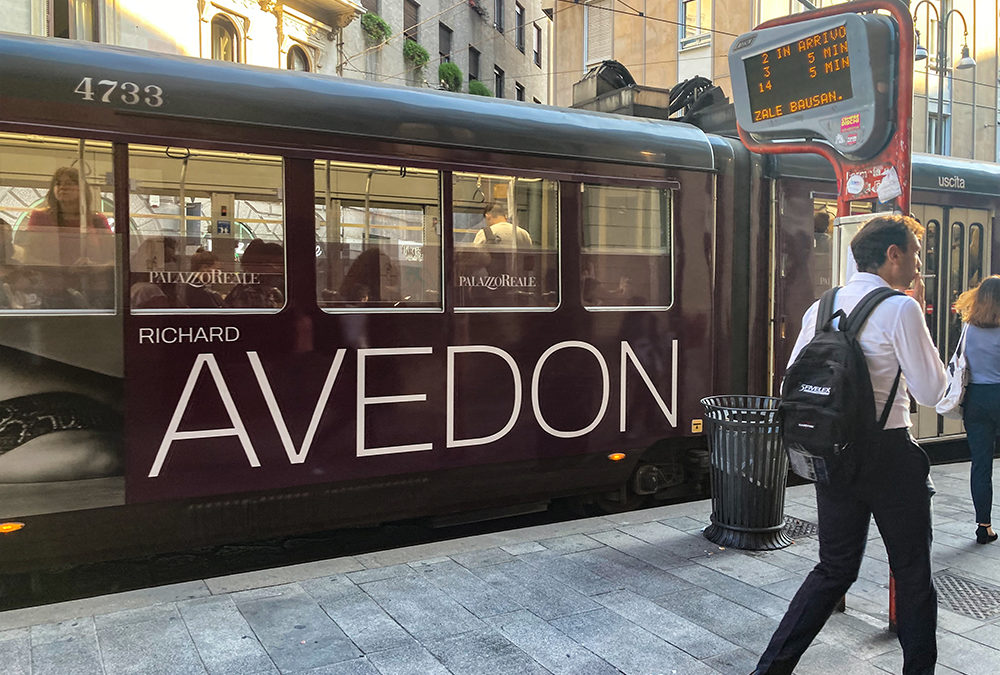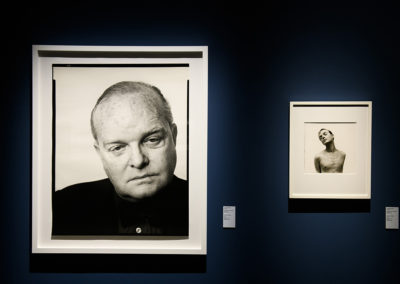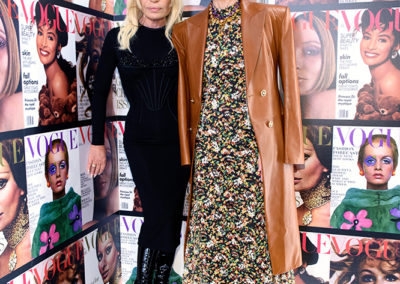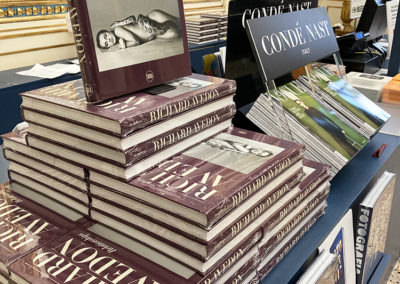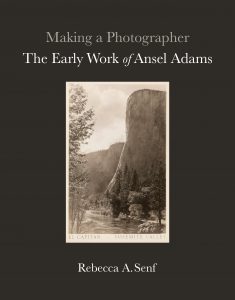The Center for Creative Photography (CCP) had a long-standing relationship with Richard Avedon and in 1989, when the Center opened its current building on the University of Arizona (UA) campus, Avedon was there in black tie announcing his intention to donate his archive to the Tucson research center. Over the next years of his life, he gave about 400 prints to the CCP, spanning his career and representing many series within his larger body of work.
Fast forward to 2018, when I curated a second monographic exhibition of Avedon’s work (the first was the 2007 Richard Avedon: Photographer of Influence for Phoenix Art Museum). I had decided to focus on something I found intriguing in Avedon’s work: pictures with multiple people within the frame not only reflected the individual subjects, but also how those people related to one another. I hoped that by comparing and contrasting photographs with only a single figure to those containing more than one, I could invite audience members to look closely at Avedon’s photographic choices and see for themselves how his pictures portrayed relationships.
(A side note here: I curated this exhibition two years after going through a separation and divorce, and it wasn’t until I started giving tours of the exhibition that I realized the topic of “relationships” and how they appeared was maybe a more personal interest than I had initially realized.)

Let’s fast forward again, this time to 2022, when the Center learned that an exhibition company called Skira, based in Italy, was interested in showing Richard Avedon: Relationships at the Palazzo Reale in Milan. With a short timeline for the exhibition’s presentation (with an opening in late September, just months away) we jumped into action revising the checklist (to add more fashion images, more iconic works – including the Nastassja Kinski image that was used for the catalogue cover and advertising, and selecting some prints featuring Versace gowns as the exhibition sponsor was Versace). Once the checklist was set, Skira began designing the exhibition for the space at the Palazzo Reale and creating the exhibition catalogue that would accompany the show.
I worked with such a great and talented Italian team. We would meet via Zoom, and they sent me graphic design for the section texts and outdoor advertising, drafts of the catalogue sequencing, and plans for the exhibition layout. I would review their materials and then we would meet to discuss changes. The work progressed amazingly quickly and soon I was drafting many additional labels for the exhibition. (One thing – among many – that really struck me about the Italian exhibition culture was that they embrace didactic text. I wrote a lot of labels and they requested a much longer length than do most American museums. Even the Palazzo Reale website contained a remarkable amount of text about the exhibition!)
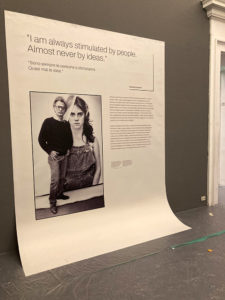 The graphic designer on the project, Bruno Stucchi, contributed an exciting element to the exhibition design. He proposed that each section include an introductory panel that included not just the section text but also a portrait of Avedon and a quote from the artist (in English) to help bring Avedon’s personality and perspective into the exhibition. He designed the large panels to look like the seamless backdrop used in a photographer’s studio, with a strong presence to create a clear beginning and to orient visitors to each new section. I love the way those section texts created impact in the space.
The graphic designer on the project, Bruno Stucchi, contributed an exciting element to the exhibition design. He proposed that each section include an introductory panel that included not just the section text but also a portrait of Avedon and a quote from the artist (in English) to help bring Avedon’s personality and perspective into the exhibition. He designed the large panels to look like the seamless backdrop used in a photographer’s studio, with a strong presence to create a clear beginning and to orient visitors to each new section. I love the way those section texts created impact in the space.
I arrived in Milan just about two weeks before the opening. It was so exciting to see the exhibition being promoted on the trolly cars – it made me feel famous!! I was there with the Center’s conservator, Dana Hemmenway, and she and I observed the unpacking of the crates and Dana checked every single print for any damage or change of condition (they were all just fine). Then the prints got placed according to the layout we had planned. I made some refinements to the placement of the photographs once I was able to see them in the space, and up they went, onto the walls.
Exhibitions get produced in a different way at the Palazzo Reale, than they do at, say, the Phoenix Art Museum. At Phx Art, the museum has staff members who work on all of the exhibitions. The Palazzo Reale, however, is a venue for which the exhibition company Skira produces exhibitions. Skira hired contract teams to do each component of the show: one company unpacked and hung the works of art; another installed track lighting and placed the lights; and another did the plexiglass work while yet another handled vinyl. Separate companies ran the gift shop; hired, trained, and scheduled the tour guides; and promoted the exhibition. It was fascinating to see all these various teams of experts interface as the exhibition came together.

The Palazzo Reale itself was pretty magical – it is a centuries old palace for the Milanese court. Three stories high it encompasses a courtyard, and our exhibition was on an upper floor in a series of rooms that had been transformed for the display of artworks. New walls divided the largest rooms in half to create a circular flow of traffic. Large panels were built in front of the palace windows to create additional wall space for hanging and to disguise the deep-set window frames. Massive chandeliers were dimmed so that the galleries could be dark and the temporary lighting would illuminate just the artworks. The night of the VIP opening we were granted special permission to hold the evening’s celebratory event in the Palazzo’s Hall of Caryatids, a massive mirror-lined room with soaring ceilings whose female sculptural figures had been damaged in World War II air raids and never fully restored.

The Palazzo is adjacent to the Milan’s Duomo, a vast cathedral in the town’s center. It was amazing to walk to work amid the bustling crowds of young people in their fashionable clothing, and throngs of tourists headed to Milan’s top tourist attractions, past the Duomo and into the Palazzo Reale, which had been outfitted just for our Avedon exhibition.
Once the exhibition was finally ready, and we had held a bustling and well-attended press event for dozens of media outlets, it was time for our celebrity VIP event. The excitement was palpable. Calls had been coming in all week: people wanted invitations to the Avedon opening! Clearly there was great anticipation and interest in this new Richard Avedon exhibition.
That evening, as the official opening event of Milan’s Fashion Week, we welcomed Donatella Versace and Vogue’s Anna Wintour, along with the Mayor of Milan, Giuseppe Sala; the president of Skira, Massimo Zelman; and the president of the Palazzo Reale, Domenico Piraina, to see the exhibition. After having our photograph made, we headed into the exhibition where Versace and Wintour chatted, posed for pictures when asked, and offered their thoughts about Richard Avedon (as both had known him).

Rebecca Senf; Massimo Vitta Zelman; Anna Wintour; Donatella Versace; Giuseppe Sala; Tommaso Sacchi
I was just floating – the whole experience was magical. As I explained to the media, Skira staff, and special guests at the press preview, it was such an incredible honor to get to present this exhibition in this way. I was so flattered to see my ideas and the Center’s amazing Avedon prints presented with such dedication, care and attention. It was tremendously exciting to know that every element: the design, the wall colors, the lighting, the labels, the organization and flow, the placement of each work, even the gift shop, was carefully planned and executed to give visitors the best possible experience. I had never felt so confident before that an audience would be fully immersed in the concept and have the best viewing experience of these stunning artworks. It was a moving and poignant highlight of my career.
It’s also exciting to share that the Avedon show isn’t finished with its Italian tour! We just learned that the exhibition is headed next to Palermo, in Sicily. I’ve been working with the Galleria d’Arte Moderna to create a new layout for their space, and the exhibition opens to the public on April 7! I can’t wait to be surrounded by Avedon’s amazing prints again soon.
Read an article I wrote on two of the photographs in the exhibition here.
Read a review of the exhibition catalogue here.
Read about the exhibition on the Palazzo Reale website.

Dr. Rebecca Senf
Chief Curator, Center for Creative Photography, University of Arizona
Dr. Rebecca Senf is Chief Curator at the Center for Creative Photography at the University of Arizona, in Tucson. Her B.A. in Art History is from the University of Arizona; her M.A. and Ph.D. were awarded by Boston University. In 2012, her book Reconstructing the View: The Grand Canyon Photographs of Mark Klett and Byron Wolfe was released by University of California Press; in 2017, her book To Be Thirteen, showcasing the work of Betsy Schneider, was published by Radius Press and Phoenix Art Museum. Senf is an Ansel Adams scholar, and recently published a book on Ansel Adams’s early years, called Making a Photographer, co-published by the CCP and Yale University Press. For more information on publications, exhibitions, and lectures see RebeccaSenf.com.
Contact Rebecca
Send a Note
Instagram: @beckysenfccp
Facebook: Becky Senf Ccp
Website

